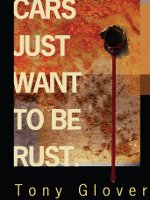G-g-ghosts…Writing the Supernatural
A script that I’m working on right now has a supernatural element. Writing in the ghost story genre you are faced with a set of conventions which don’t sit easily within the usual shape of a three act, redemptive drama.
Most feature films are based on a familiar pattern – a character is faced with a problem. They decide to solve it. Their first attempt fails. They try something else. They fail again. Finally, using their ingenuity and their own, special qualities, they succeed. They solve the problem. Through their own efforts they catch the murderer, rob the bank, woo the lover, kick the alien out of the spaceship… The world is back to rights – different perhaps – but order is restored. And your central character has changed too. Wiser, richer, happier.
Even the briefest glance at the genre reveals that things don’t usually turn out that way in the ghost story. In tales of the supernatural, the central character usually ends up dead. Or crazy. Or, if they’re really lucky, haunted for all eternity…
Ghosts warn, or attack, or exact vengeance. Whatever they do, the result is rarely pleasant for the living. In The Beckoning Fair One, by Oliver Onions, the writer Oleron is driven to madness, then death, by one of his characters.
In the Western, The Pale Rider, the entire town of Lahood, California, suffers the vengeance of the Preacher, played by Clint Eastwood. The town thugs kill Megan Wheeler’s dog. She buries the hound and says a prayer. Then a mysterious rider, the Preacher, appears from the mountains. The rest is mayhem…
The MR James’ story, ‘Oh Whistle and I’ll Come to You, My Lad, ’ was made into a TV drama starring John Hurt. Parkins is a professor who decides to spend a few days in winter on the east coast, in the village of Burnstow. His pleasant stay at the Globe Inn is marred by an eerie whistling sound. Soon his solitary walks on the deserted beach are disturbed by a strange, indistinct shape:
‘Rapidly growing larger, it declared itself as a figure in pale, fluttering draperies, ill defined. There was something about its motion which made Parkins very unwilling to see it at close quarters…’ And, without wishing to spoil the plot, The Woman in Black, does not end well either…
So the challenge for any writer is to create a ghost story which fulfils the expectations of the audience, without writing a predictable ending. One way may be to mix genres. The Swedish writer, Johann Theorin, achieved this in The Darkest Room, a crime story which has a chilling, other worldly atmosphere. Another may be to give the familiar, doomy resolution a twist.
I’ve recently finished reading The Woman in the Fifth, by Douglas Kennedy. The story is set in modern day Paris – a twist, since most ghost stories are set in the past. The story was recently turned into a film starring Kristin Scott Thomas and Ethan Hawke. A film lecturer flees the US to escape from a broken marriage and a college scandal. At a literary salon, the man meets a mysterious and attractive older woman, Margit. Though the book contains moments which teeter on the daft, it works. The tricky issue of the resolution is handled well.
‘Do I believe in ghosts? No, but I am afraid of them,’ said the marquise du Deffand.
One of the terrors we feel about ghosts is paradoxical – the idea that in fact they may not exist. One of our greates fears is that the visons and sounds we are experiencing are not coming from from any any supernatural being, but originate within ourselves…




